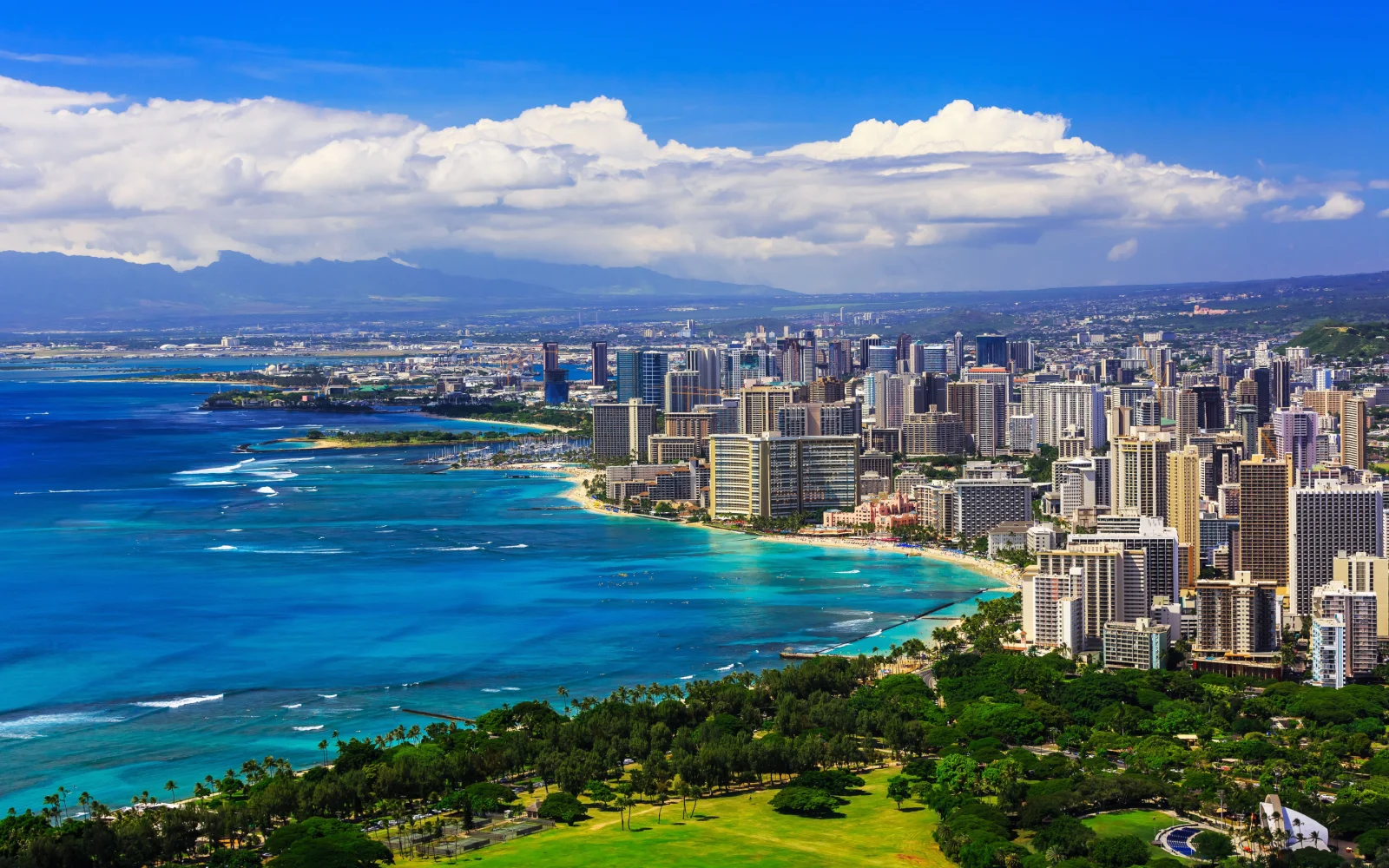How many people live in HawaiI?
Hawaii has a total population of around 1,440,000 people. This population is spread across its seven inhabited islands, with the most populous being Oahu. Oahu is not only home to over a million people, but it also hosts the state’s capital, Honolulu.
In contrast, the other Hawaiian islands – Hawai’i, Maui, Kauai, Molokai, Lanai, and Ni’ihau – have smaller populations, each adding their unique character to Hawaii’s diverse demographic tapestry.
The Hawaiian islands are a popular vacation destination, but how many people live in Hawaii year-round? You’ll see the total Hawaii population and how many people live on each island in this guide.
From bustling Oahu to vibrant Lanai, Hawaii’s residents are scattered around the islands. Do you know which island boasts the biggest population of them all?
We’ll take a look at how many people live in Hawaii next!
How Many People Live in Hawaii?
If you’ve ever wondered how many people live in Hawaii, you might be surprised to learn that the Hawaiian population is around 1,440,000 — similar to the cities of San Diego or San Antonio.
Since Hawaii is a state and consists of several islands with cities and towns on each one, the total population of around 1.4 million is actually quite low.
Hawaii has 7 inhabited islands that each contribute their own part of the total population:
- Oahu
- Hawai’i
- Maui
- Kauai
- Molokai
- Lanai
- Ni’ihau
Of these islands, only 6 have a population over 100 people (Ni’ihau is home to around 84 people).
The largest and most populous city in Hawaii is the capital, Honolulu. It’s on the southern shore of Oahu and has a population of around 345,500.
Oahu is also where most of Hawaii’s population is concentrated, followed distantly by Hawai’i (The Big Island), Maui, Kauai, Molokai, and Lanai.
Let’s take a closer look at how many people live in Hawaii by checking out the population numbers on its most-inhabited islands.
Remember, these numbers indicate year-round residents – Hawaii attracts millions of visitors for vacations, but they don’t count in the overall population totals!
How Many People Live in Oahu?
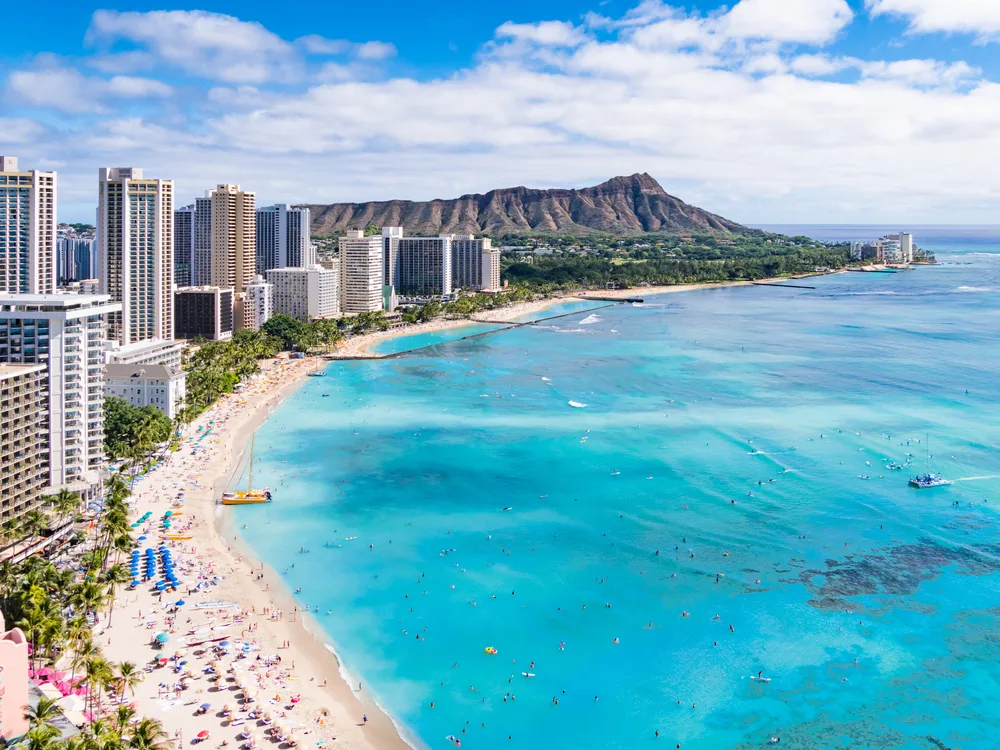
okimo/Shutterstock
- Biggest city: Honolulu
- Total population: 1,016,508+
- Population density: 1,703.5/sq. mi.
As Hawaii’s most populated island, Oahu (The Gathering Place) is where most of the people living in the archipelago are located.
The capital of Hawaii, Honolulu, sits here on the southern shore. Honolulu County is home to a big chunk of the island’s population (about 1 million).
With a little over a million people on Oahu and a relatively small area (about 600 square miles), the population density in Oahu is relatively high with over 1,700 people per square mile.
This can make Oahu seem a little more crowded and lively than the other islands, but you’ll notice it most in the beaches and resort areas popular with tourists.
The island seems most crowded during peak season in Oahu, which spans from December to February.
Venturing away from the most popular areas — Waikiki Beach and Honolulu — can show you the quieter side of the island.
How Many People Live in Hawai’i?
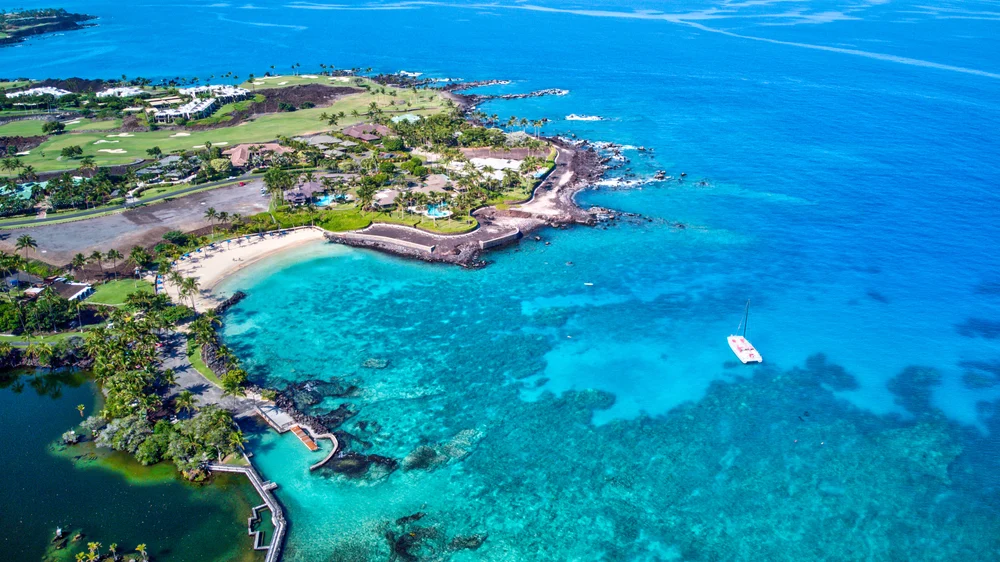
MGambill/Shutterstock
- Biggest city: Hilo
- Total population: 200,629+
- Population density: 49.8/sq. mi.
Hawai’i, also known as The Big Island, is Hawaii’s second most-populated island. But it takes a distant second place compared to Oahu’s million-plus population.
With around 200,630 people living on the island, its population is roughly the same as Salt Lake City, Utah (199,723) or Little Rock, Arkansas (202,591).
Oahu seems positively tiny by comparison with Hawai’i’s area measuring around 4,028 square miles. That totals about 62% of all the land area in the Hawaiian islands!
While that’s not a crazy-low population, the island of Hawai’i is big — peep the nickname — and that means the population is largely spread out.
That’s reflected in the low population density of around 50 people per square mile here.
The island may seem more busy and crowded than the population would indicate when you’re in the liveliest areas: Hilo and Kailua-Kona.
How Many People Live in Maui?

tomtomdotcom/Shutterstock
- Biggest city: Kahului
- Total population: 164,221+
- Population density: 225.8/sq. mi.
Tagging just behind the island of Hawai’i in population, the island of Maui is home to over 164,200 people. Most of them are concentrated around Kahului.
Even though it’s the 3rd most-populated island in Hawaii, Maui (the Valley Isle) is actually the 2nd most-visited island in the archipelago.
Tons of people come to Maui for vacations each year.
But the devastating Lahaina, Maui fires of 2023 displaced thousands of residents — the latest figure cited around 6,000 — leading to lower population numbers overall.
Maui’s population is spread around the island’s relatively small 727-square mile area. This creates a medium population density of around 226 people per square mile.
The biggest city, Kahului, is home to around 30,000 of Maui’s 164K+ population.
Maui is typically most crowded along the northeastern, southern, and western coasts, where many of the places to stay in Maui are located.
How Many People Live in Kauai?
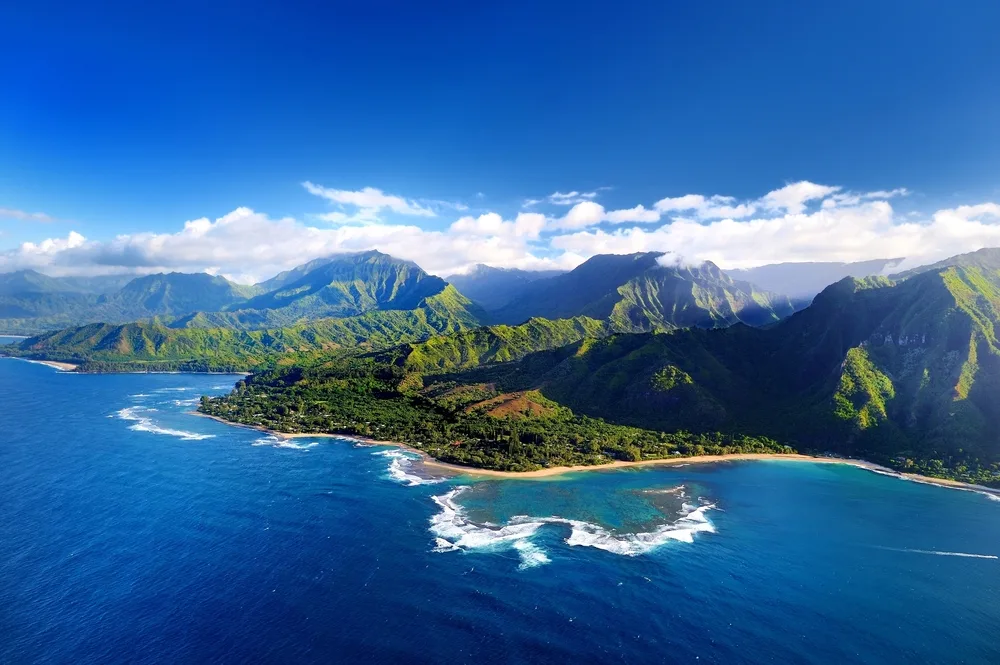
MNStudio/Shutterstock
- Biggest city: Kapaa
- Total population: 73,298+
- Population density: 132.7/sq. mi.
There’s a huge gap between the total population of Maui and the next-most populous island in Hawaii, Kauai (The Garden Isle).
With around 73,300 people living on the island, it’s sparsely populated compared to Oahu, Hawai’i, and Maui. But it also has a much smaller area.
With 552.3 square miles of land mass, Kauai is smaller than Oahu (which is roughly 600 square miles).
Its small size means even just 73K+ people create a medium population density not much less than Maui’s with around 133 people per square mile here.
Kauai is mostly undeveloped and GoHawaii estimates that only around 10% of the island is developed with resorts, hotels, restaurants, and shops.
You’ll run into more people around Kapaa, the island’s largest town and home to around 12,000 people.
Kauai’s beaches may get pretty crowded during the peak season in July and August, but it’s nothing compared to the islands of Oahu, Maui, and Hawai’i.
How Many People Live in Molokai?
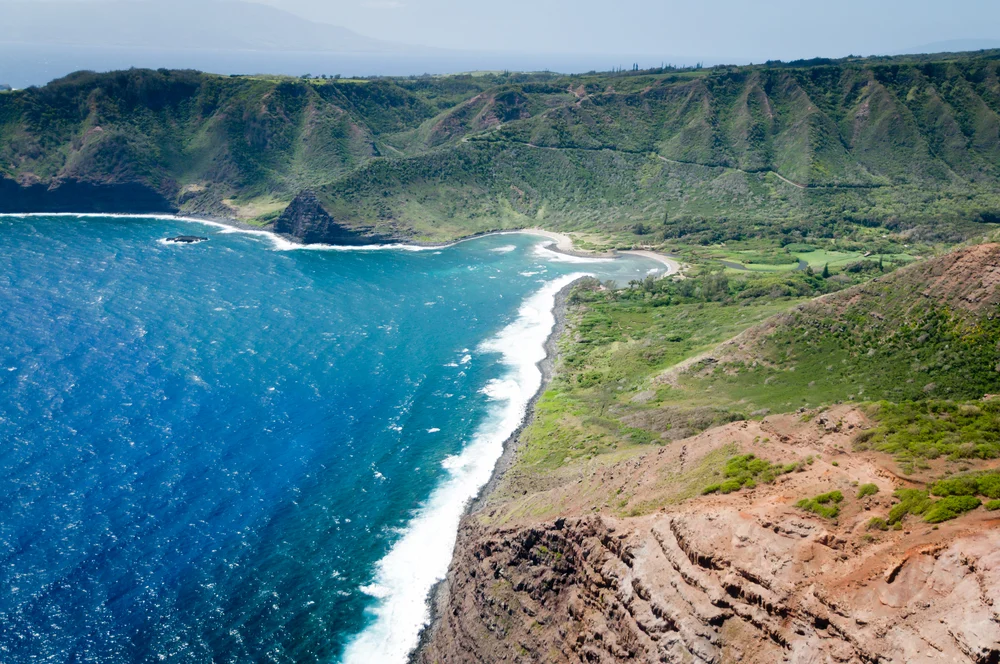
Eugene Kalenkovich/Shutterstock
- Biggest city: Kaunakaikai
- Total population: 7,345+
- Population density: 28.3/sq. mi.
There are less than 10,000 people living on the island of Molokai (The Friendly Isle), making it the 5th most-populated island in Hawaii.
With roughly 7,350 people living on Molokai, it’s comparable to a very rural small town in the contiguous US — just with gorgeous beaches, volcanic mountains, and breathtaking green valleys.
With just 260 square miles of area, Molokai is small compared to the other Hawaiian islands and it receives fewer visitors each year.
A small area and low population create a low population density on Molokai with around 28 people per square mile here.
Even the massive, spread-out island of Hawai’i has a higher population density of around 50 people per square mile.
Most of the people on Molokai are concentrated around Kaunakaikai on the southern shore. This is the hub of the island and home to its harbor, shops, restaurants, and hotels.
How Many People Live in Lanai?
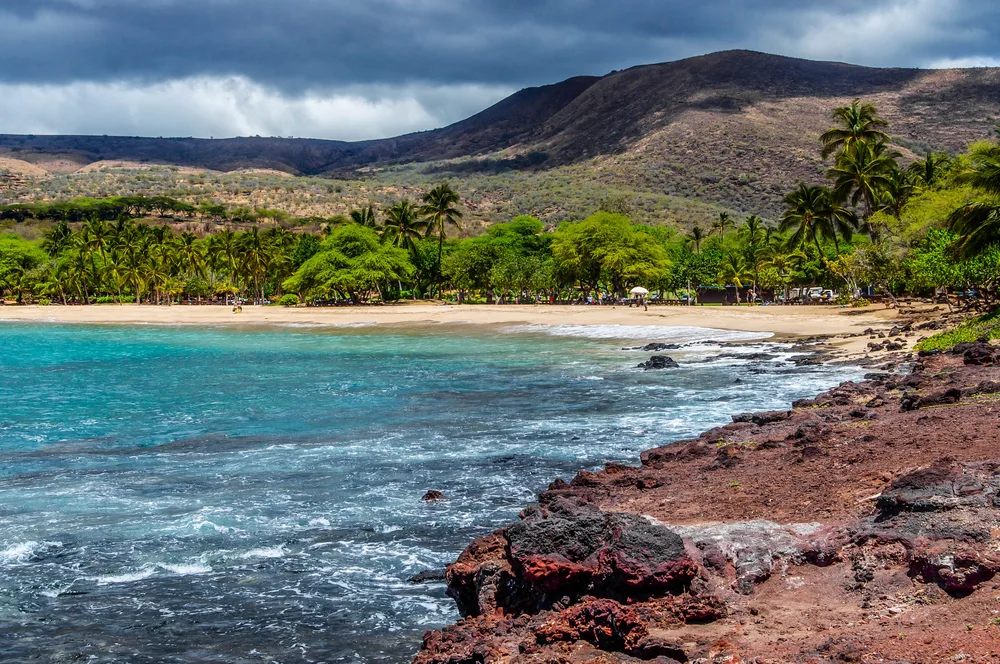
MH Anderson Photography/Shutterstock
- Biggest city: Lanai City
- Total population: 3,367+
- Population density: 24/sq. mi.
If you thought Molokai’s population was low, Lanai’s is even smaller. Lanai (The Pineapple Isle) is home to around under 4,000 people!
Lanai’s only developed city is the aptly-named Lanai City, where around 3,332 people live on this sparsely-populated island.
Lanai’s total area is about 140 square miles and at its widest point, the island measures just 18 miles across.
With under 4,000 people living on this small island, the population density still works out to just 24 people per square mile.
Lanai is usually not the main destination for tourists, but has been a popular spot to visit from nearby Maui when traveling between the Hawaiian islands.
Is Hawaii’s Population Growing?

VII aesthetic/Shutterstock
Hawaii’s population is not growing, but declining. Hawaii sees around 20 people leave the island for other states, especially California, Texas, and Nevada.
Every year since 2015 has seen the population of Hawaii decline further with around 15,000 people leaving the islands during 2022 alone.
A high cost of living (84% higher than average in the US) seems to be the main driving force behind people leaving Hawaii in droves.
Housing costs in particular are named by many former residents and natives that have since moved to other US states.
With housing costs about 214% higher than the rest of the US according to PayScale, it’s easy to see how residents can see the grass being greener in states with a lower cost of living and options for housing.
Limited economic opportunities and high taxes are also factors in people choosing to leave the paradise of Hawaii for US states that may offer more work and saving opportunities.
Even though Hawaii’s population is in decline, it’s not losing as many residents as states like California (800,000 residents lost between 2020 and 2023).
As costs continue to rise around the US and globe, more and more people living in Hawaii find themselves being “priced out” of the island life.
But many former residents and natives vow that if the cost of living becomes more affordable in Hawaii, they wouldn’t hesitate to move back.
Things to Consider

Galyna Andrushko/Shutterstock
To really understand how many people live in Hawaii, you should keep these considerations in mind.
- Population totals are from 2020 census. The population figures listed in this guide are from the most recent census completed in 2020. That means most numbers will be slightly different today, but these figures are still a great indicator of the general population and density throughout the Hawaiian islands.
- Population may fluctuate by season. Hawaii has always been a popular place for snowbirds, especially from Canada, who are seeking warmer weather and a chance to escape the dreary, cold winter weather back home. This means numbers may rise during the typical winter months and fall again come spring and summer.
- Natives are moving away from Hawaii. Recent data found that there are currently more native Hawaiians living in the contiguous United States than in the state of Hawaii. That’s a first and shows how a skyrocketing cost of living with a leap in housing costs is driving native Hawaiians out of the state.
- Visit during the right time of year. If you’re looking at how many people live in Hawaii to determine which islands will be the least or most crowded, you can also check out info on the best time to visit Hawaii to get an idea of the peak, low, and cheapest times of year to visit each island.
Frequently Asked Questions

Noble Blood/Shutterstock
Now that you’ve got an idea of how many people live in Hawaii, you might have a few lingering questions about the population and demographics of this state.
Take a look at the FAQs below to learn more!
What is the majority race in Hawaii?
Asian is the majority race in Hawaii, comprising 37.1% of the total population. White alone is 25.2%, 2 or more races are 24.7%, non-Hispanic or Latino account for 21.3%, and Hispanic/Latino represent 11.1% of Hawaii’s population.
Is it expensive to live in Hawaii?
Yes, it’s expensive to live in Hawaii. The state has an 84% higher cost of living than the national average. Housing costs in Hawaii are about 214% higher than the rest of the United States, according to Payscale data.
What is the current population of Hawaii 2022?
The current population of Hawaii is 1,440,200+ people, but that number relies on figures from the 2020 US Census and may be slightly lower today. Hawaii loses around 15,000 people each year since 2022.
What is the population of the Big Island?
Hawaii’s Big Island, Hawai’i, has a total population of 200,629 people as of 2020. It’s the island with the second-highest population in Hawaii (but it’s pretty far behind Oahu’s 1,016,500+ people).
This is a large island and the relatively small population is scattered around, creating a low population density around 50 people per square mile.
Who owns most of the Big Island?
What is the average household income in Hawaii?
Hawaii's average household income is around $113,300 per year with multiple people in the household contributing around $39,045 per person to the household income average.
The median household income in Hawaii is around $88,000 (2020 US Census), meaning if you tally every person's income in the state, roughly half are over $88,000 and half are under this amount.
So, How Many People Live in Hawaii Overall?
Overall, there are about 1,440,200 people live in Hawaii. This information comes from the most recent 2020 US Census Bureau data.
But the population is not evenly scattered throughout the Hawaiian islands. There’s a huge imbalance of people on, say, Oahu compared to Molokai.
Hawaii’s most-populated island, Oahu, is home to around 1,016,000 people, contributing to most of the total population across the islands.
The Big Island, Maui, Kauai, Molokai, and Lanai contribute the rest of the population. Some of these islands have less than 4,000 people living on them!
While Hawaii’s population has been in a steady decline, it’s clear that these fascinating, vibrant islands hold a special place in the hearts of their residents.
If the cost of living begins to drop or former residents are able to find more affordable housing options on-island, we may see this trend reverse and watch the population of Hawaii skyrocket once again!



